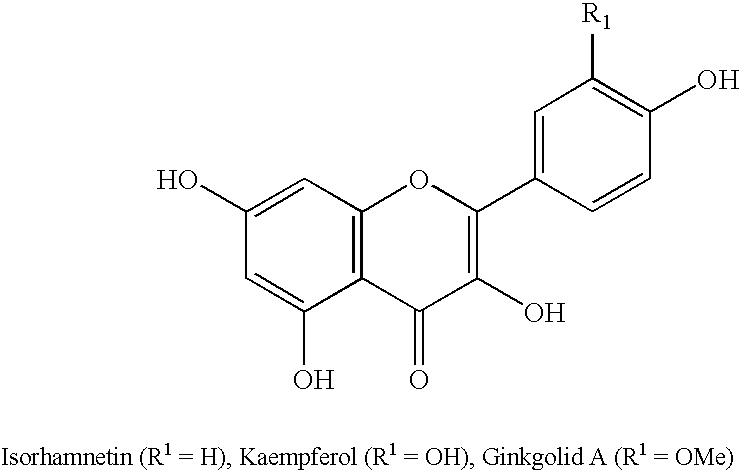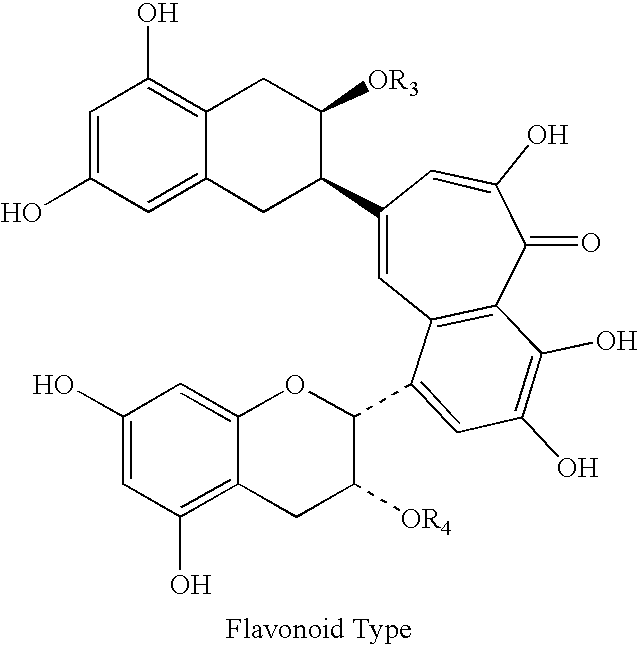Compositions of extracts of aloe for oral administration
a technology of aloe extract and composition, which is applied in the field of botanical extracts, can solve the problems of reducing consumption, affecting the quality and length of life, and the tendency to eat too much, and achieves the effect of reducing appetite and inducing satiety
- Summary
- Abstract
- Description
- Claims
- Application Information
AI Technical Summary
Benefits of technology
Problems solved by technology
Method used
Image
Examples
examples
Influence of Extracts on Feeding Behavior and Responses of an Insect, Spodoptera littoralis, to Glucose
[0058]The feeding behavior of insects is modulated by the levels of nutrients in their diet as well as “secondary metabolites” from plants. It is known that an insect that has been given a high carbohydrate diet becomes less responsive to sucrose or glucose, whereas the response to protein is not influenced to the same level. The insect model has been applied for studying whether plant preparations and / or extracts would alter the feeding behavior of the insect and especially alter their response to glucose. Due to the fact that there are many similarities in how insects and mammals perceive compounds, the results of how plant derived preparations and extracts decrease the responsiveness to a phagostimulant and thus decrease food intake are indicators whether the plant extracts could also be useful to induce satiety in humans or reduce appetite in order to reduce caloric intake, in ...
examples 1-v
Responses to Sugars
[0061]The data presented in Table 1 shows the response of insects to a series of different combinations of sugar-treated and untreated discs. When insects were exposed to a choice between two discs treated with the same stimulant, they did not discriminate, resulting in a low FI. In contrast, when the insects were exposed to control discs treated with a sugar and the treatment disc was just treated with water, they ate more of the sugar-treated disc than the blank disc. The data also shows that the response to sucrose was greater than that to glucose, which shows that sucrose is a more potent phagostimulant to S. littoralis than glucose. Because sucrose is more potent than glucose, the next series of experiments with the test extracts were tested in combination with sucrose and then repeated with glucose.
TABLE 1Effect of sugars on feeding response of Spodoptera littoralisTest: Control versusExampleTreatmentFeeding IndexISucroseSucrose10.7IIGlucoseGlucose8.7IIISucr...
examples 1-2
, Comparison Examples C1-C8
Responses to Extracts in Combination with Either Sucrose or Glucose
[0062](i) Sucrose. The responses of S. littoralis to the extracts varied (Table 2a). The Aloe and Olive leaf extracts were the only two extracts to elicit a significant phagostimulant response across all three concentrations. This indicates that the insects fed on the disc treated with either Aloe or olive leaf in preference to the disc treated with sucrose. The 0.05M concentration was selected for the feeding experiments as this concentration was optimal. Ginseng was a suppressant at all concentrations tested. This was the only extract to show suppressant activity at the three concentrations.[0063](ii) Glucose. The responses of S. littoralis to the extracts and other test material when tested in combination with glucose were similar to those recorded with sucrose, although the level of activity was sometimes greater (Table 2b). For example, the FI response of S. littoralis to 100 ppm Aloe ...
PUM
 Login to View More
Login to View More Abstract
Description
Claims
Application Information
 Login to View More
Login to View More - R&D
- Intellectual Property
- Life Sciences
- Materials
- Tech Scout
- Unparalleled Data Quality
- Higher Quality Content
- 60% Fewer Hallucinations
Browse by: Latest US Patents, China's latest patents, Technical Efficacy Thesaurus, Application Domain, Technology Topic, Popular Technical Reports.
© 2025 PatSnap. All rights reserved.Legal|Privacy policy|Modern Slavery Act Transparency Statement|Sitemap|About US| Contact US: help@patsnap.com



